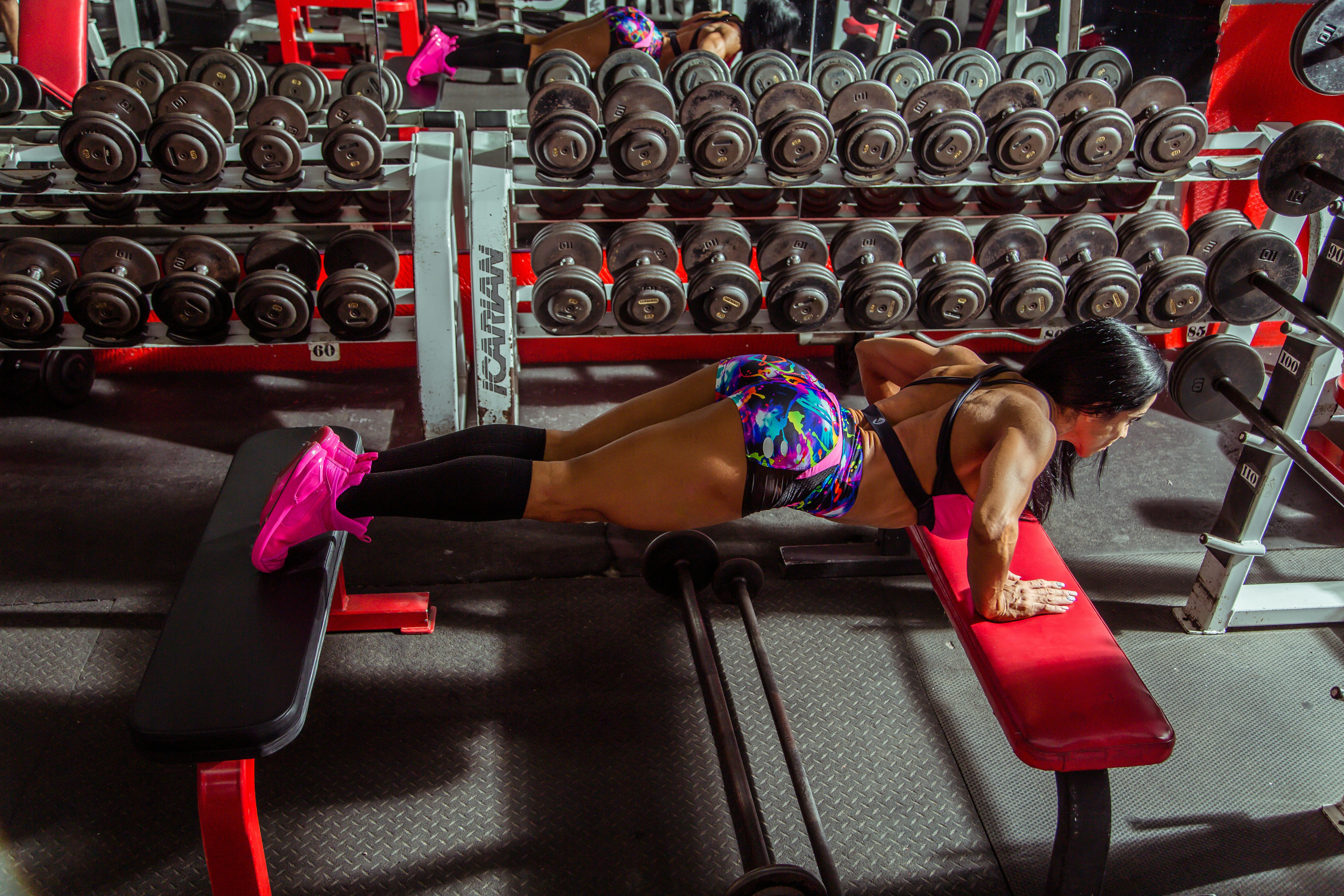Practical Ways to Master Schulterdrücken Muskulatur for Optimal Performance in 2025
In the ever-evolving landscape of fitness, mastering the art of Schulterdrücken (overhead pressing) is a crucial component for achieving optimal performance in strength training and muscle development. This exercise not only targets the shoulder muscles but also enhances overall upper body strength, stability, and posture. As we advance into 2025, understanding the nuances of Schulterdrücken and incorporating practical methods into your training routine is essential for fitness enthusiasts at all levels.
Embracing effective Schulterübungen (shoulder exercises) can lead to significant gains in muscle hypertrophy and athletic performance. With the right approach to Krafttraining (strength training), including a well-structured Trainingsplan (training plan) and attention to Körperhaltung (posture), individuals can dramatically improve their shoulder stability and strength. This article will delve into practical tips and techniques for mastering Schulterdrücken, ensuring that you not only enhance your performance but also minimize the risk of injury.
This guide serves as your roadmap to optimal shoulder training, featuring expert insights, practical training tips, and essential warm-up exercises. By the end, you’ll be equipped with the knowledge needed to effectively incorporate Schulterdrücken into your fitness regimen, paving the way to achieving your fitness goals in 2025.

Key Techniques to Perfect Your Shoulder Press
Understanding Shoulder Anatomy
To excel at Schulterdrücken, it’s essential to have a grasp of the anatomical structures involved. The primary muscles engaged during the overhead press include the deltoids, trapezius, and the rotator cuff muscles. Awareness of how these muscles function together allows for better exercise execution and injury prevention.
The deltoids are composed of three fibers: anterior, lateral, and posterior. Focusing on the engagement of all three fibers during your training will enhance overall muscle development and shoulder stability. Proper coordination of these muscle groups ensures that your overhead presses are not only effective but also safe.
Mastering the Technique
The key to successful Schulterdrücken lies in maintaining proper form throughout the movement. Begin by standing with your feet shoulder-width apart and the weight positioned either at shoulder level or slightly above. Activate your core to stabilize your spine, and avoid arching your back when pressing the weight overhead.
Engagement of the shoulder blades is paramount; retract them as you initiate the movement and keep them fixed as you lift the weight. This focus on technique not only helps you to lift heavier weights safely but also promotes long-term shoulder health.
Warm-Up and Mobilization
Before diving into your workout, a comprehensive warm-up is crucial for preparing your muscles and joints for the heavy lifting. Utilize dynamic stretches specifically aimed at the upper body to enhance your range of motion and activate the shoulder girdle. Exercises such as arm circles, shoulder dislocations with a resistance band, and wall slides can significantly improve shoulder mobility.
Incorporating Aufwärmübungen (warm-up exercises) into your routine helps in increasing blood flow to the muscles and decreases the risk of injuries. Prioritize this step to ensure your shoulders are primed for the intensity of your training sessions.
Building a Comprehensive Training Plan
Determining Training Volume and Intensity
A well-structured training plan for Schulterdrücken should consider both the volume and intensity of your workouts. For hypertrophy, aim for 8-12 repetitions per set at 70-85% of your one-repetition maximum. Adjust your load according to your fitness level, ensuring that you challenge your muscles while maintaining proper form.
Incorporate variations of shoulder presses, such as Dumbbell Press or Langhantel (barbell) variations, to target different muscle fibers and prevent adaptation. This not only fosters Muskelaufbau (muscle growth) but also keeps your workouts engaging.
Tracking Progress and Adjustments
To ensure continuous improvement, keep meticulous records of your trainingsfortschritt (training progress). Track your weights, repetitions, and overall performance to identify areas for adjustment. This attention to detail will help in maintaining motivation and achieving your fitness goals.
Consider implementing a periodization approach to your training. This method allows for systematic increases in intensity, volume, or weight over time, preventing plateaus and promoting stronger adaptations.
Incorporating Functional and Core Training
Incorporating elements of Functional Training into your program will enhance overall shoulder functionality and stability. Exercises such as Planks with Shoulder Taps or Medicine Ball Throws can improve overall athleticism and dynamic coordination.
By focusing on core activation during your overhead presses, you reinforce core stability, which plays a significant role in maintaining a proper lifting posture. This holistic training view combines aspects of Körpergewichtstraining (bodyweight training) and free weights to optimize shoulder strength and performance.

Injury Prevention Strategies for Shoulder Training
Common Shoulder Issues and Their Causes
Shoulder injuries can arise from poor technique, inadequate warm-up, or overtraining. Understanding common issues, such as Schulterprobleme (shoulder problems) like rotator cuff strains or impingements, is essential. Being informed enables proactive strategies to mitigate risks associated with these injuries.
Techniques for Reducing Injury Risk
Always prioritize proper form and technique over lifting heavier weights. As strength increases, regularly reassess your movements and make necessary adjustments. Additionally, incorporating Dehnungsübungen (stretching exercises) targeting the shoulders and upper back is beneficial in maintaining flexibility and reducing tension.
Taking breaks when fatigued is crucial to avoid Übertraining (overtraining). Listen to your body and rest between sets to ensure effective recovery. Adequate recovery periods significantly contribute to long-term training success.
The Role of Rehabilitation and Physiotherapy
If you do sustain a shoulder injury, engaging in frühzeitige Physiotherapie (early physiotherapy) can facilitate quicker recovery and help you regain strength. Adhering to rehabilitation strategies will not only expedite healing but also enhance strength adaptations post-injury.
Nutrition and Recovery for Optimal Performance
Importance of Nutrition in Muscle Recovery
Post-workout nutrition is critical for effective recovery and muscle hypertrophy. Consuming a balanced meal that combines protein and carbohydrates within 30-60 minutes after training can maximize recovery. Optimal protein intake supports muscle synthesis, while carbohydrates restore glycogen stores, providing energy for subsequent workouts.
Supplements and Their Effectiveness
While whole foods should form the basis of your nutrition, certain supplements may provide an edge in performance. Creatine, protein powders, and branched-chain amino acids (BCAAs) can aid in muscle recovery and growth when used strategically.
Consult with a registered nutritionist or dietitian to build a personalized Ernährungsplan that meets your unique fitness goals, limits muscle fatigue, and supports overall athletic performance.
Understanding the Role of Stress Management
Monitoring and managing stressors in your training and daily life can have profound effects on your body’s recovery capabilities. Implementing stress-reducing techniques such as meditation, yoga, or even adequate sleep will enhance your body’s resilience and overall health.
Q&A Section: Common Questions About Schulterdrücken Training
How often should I train shoulders?
For optimal strength gains and muscle growth, aim to train your shoulders 1-2 times per week, allowing adequate recovery time between sessions. Individual recovery time may vary based on training intensity and experience level.
What are the safest weights to start with?
If you’re a Anfänger (beginner), starting with bodyweight or light dumbbells is advisable. Gradually progress as you build strength, ensuring you can maintain correct form throughout each repetition.
Can I perform Schulterdrücken without weights?
Yes! Shoulder presses can be effectively performed using resistance bands or even bodyweight exercises, helping to engage the shoulder muscles without the risks associated with heavy lifting.
How long does it take to see results?
With consistency in training, nutrition, and recovery, individuals can start noticing improvements in strength and muscle definition in as little as 4-6 weeks, depending on their initial fitness levels.
What should I do if I feel shoulder pain?
If you experience shoulder pain while training, immediately discontinue the exercise and assess your form. If pain persists, consult a healthcare professional or physiotherapist for guidance and potential rehabilitation strategies.
